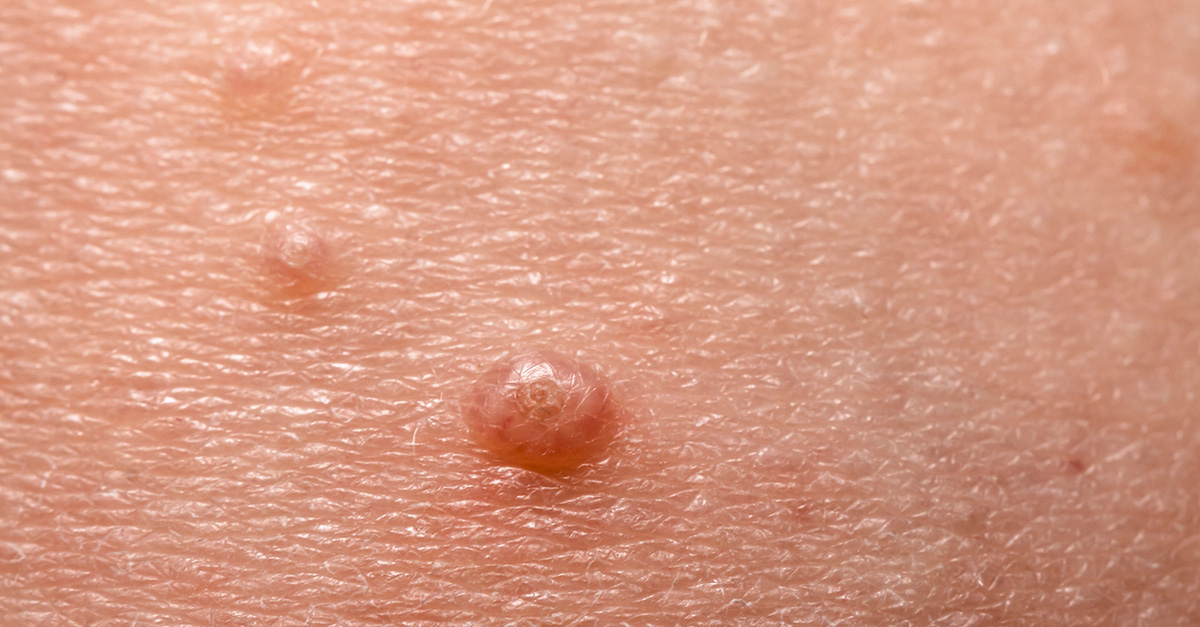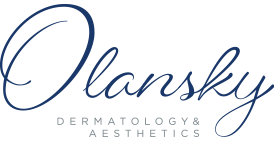From ringworm to impetigo, there are many contagious skin conditions we may encounter. One that doesn’t get quite as much attention but is still fairly common is molluscum contagiosum. Characterized by small, pink, or flesh-colored bumps, the infection spreads easily and is more prevalent in young children.
Here, we share everything you need to know about this frustrating rash, including how we can help if you or your child is diagnosed with it.
Symptoms of Molluscum Contagiosum: How to Tell It Apart from Other Rashes
The telltale sign of molluscum contagiosum is a rash with small, raised bumps. Known as mollusca, the bumps are generally not very big (some are as tiny as a pinhead), and feel firm to the touch. Their center may have a slight divot.
Bumps caused by molluscum contagiosum can develop anywhere on your body, but you’ll especially find them on the face, trunk, arms, and legs. In sexually active adults, the infection can also be spread via intercourse, in which case the rash may appear on your genitals, thighs, or lower abdomen.
How Molluscum Contagiosum Spreads on Surfaces & Between People
Like many contagious skin infections, molluscum contagiosum is a virus that is passed by skin-to-skin contact. But transmission doesn’t have to involve direct touches to spread. You can also catch the virus by coming into contact with contaminated surfaces, such as wrestling mats or towels; it can even live in swimming pools and hot tubs. Rubbing or scratching the bumps and then touching another part of your body can also spread the rash.
Banishing the Bumps: Molluscum Contagiosum Treatment
In most cases, mollusca will clear up entirely within 18 months, though it’s possible they may take even longer to fully heal. (And yes, you’re contagious for as long as the bumps persist.) If your immune system is healthy, the bumps will likely disappear without the need for treatment. Home remedies like oatmeal baths can soothe irritation while keeping the mollusca covered can help stop the spread. With that in mind, there are several reasons why we may prescribe medication to accelerate healing.
- Discomfort: Lesions may lead to self-consciousness in both children and adults and enduring them for several months can be uncomfortable both physically and emotionally.
- Risk of Transmission: Because bumps are contagious until they heal, eliminating them more quickly reduces the risk of spreading them to others and different parts of your body.
- Scarring and Infections: Mollusca can become itchy and inflamed. While you may be able to avoid touching them, young children may struggle to resist scratching, which can lead to infection and scarring. Keeping the bumps covered can help, but may not be practical in every situation.
If you’re a good candidate for molluscum contagiosum treatment, our doctors may suggest one or more of the following approaches.
Lesion Removal
Our skincare specialists may scrape or freeze off lesions using special tools.
Topical Therapy
There are both at-home and in-office topical solutions that can be applied to lesions. One type, cantharidin, creates blisters, which fall off with the bumps. Others, such as retinoic acid, can cause isolated irritation to trigger a healing response.
Immunocompromised Therapy
If you have HIV/AIDS or other conditions that compromise your immune system, you may not respond to traditional treatments. Instead, we may recommend therapies designed to boost your immunity, along with alternate therapies..
Schedule a Molluscum Contagiosum Treatment Appointment With Olansky Dermatology & Aesthetics
No one should have to live in discomfort — either physical or emotional — which is why we offer effective treatment options for a wide range of skin conditions. If you’re seeking dermatological care for yourself or a family member of any age, schedule an appointment online or by calling (404) 355-5484.


